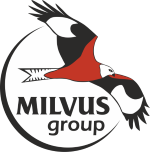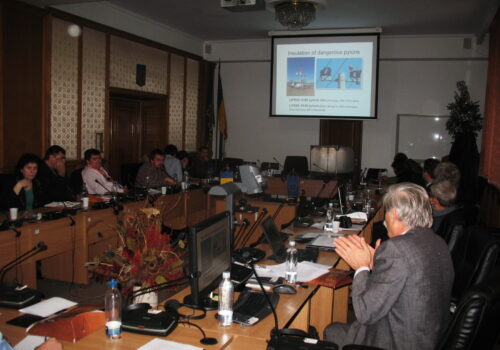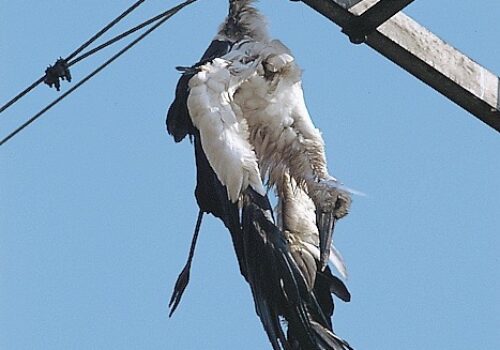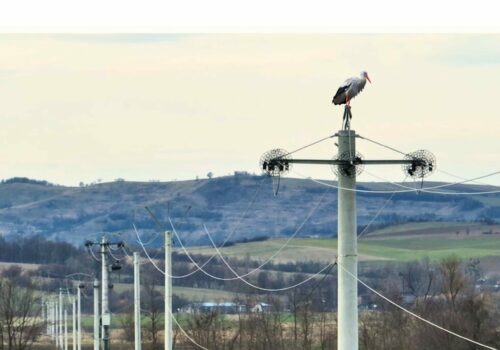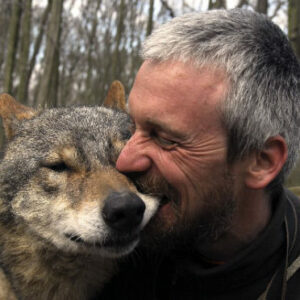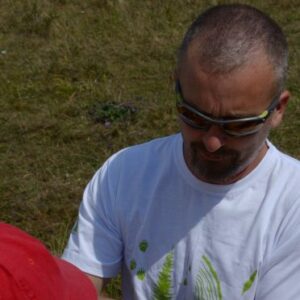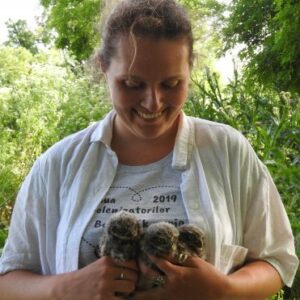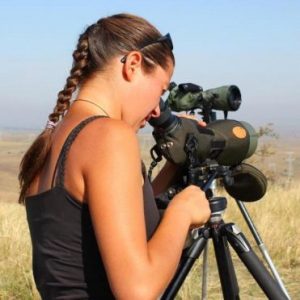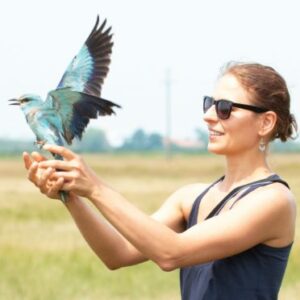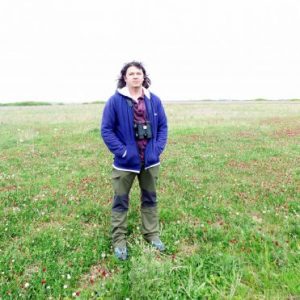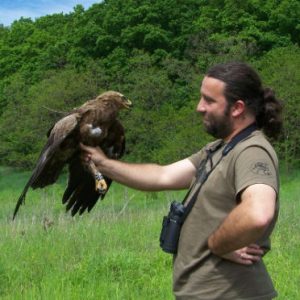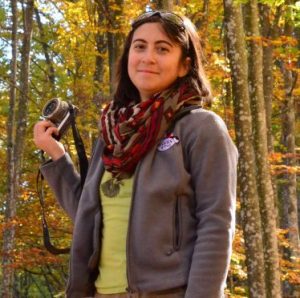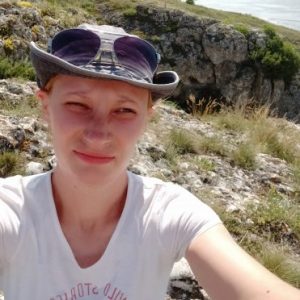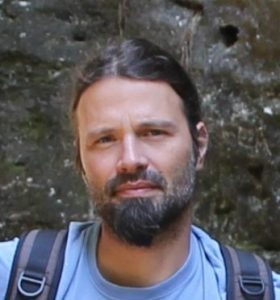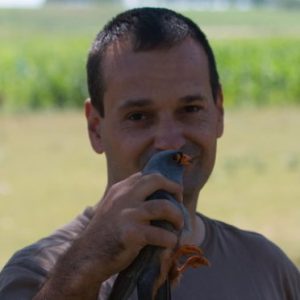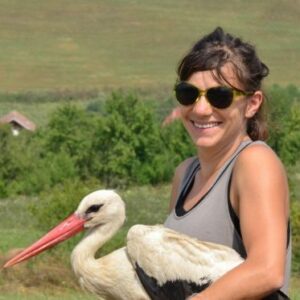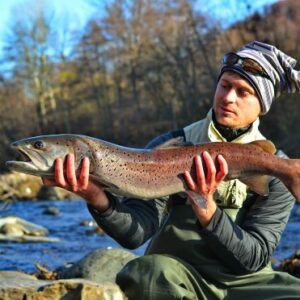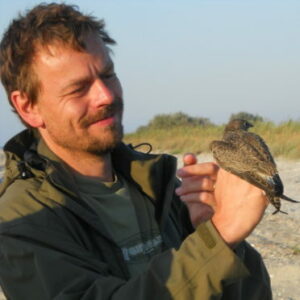A new case brings into focus the effects that power lines can have on birds. On the outskirts of the village of Bâlc in Bihor county, our ornithological colleagues found three lifeless white storks, two near an electric pole and the third hanging from the wires. One of them had a satellite transmitter mounted on it, through which the Polish ornithologists followed the bird’s route. The transmitter was dismantled by us and returned to our colleagues in Poland.
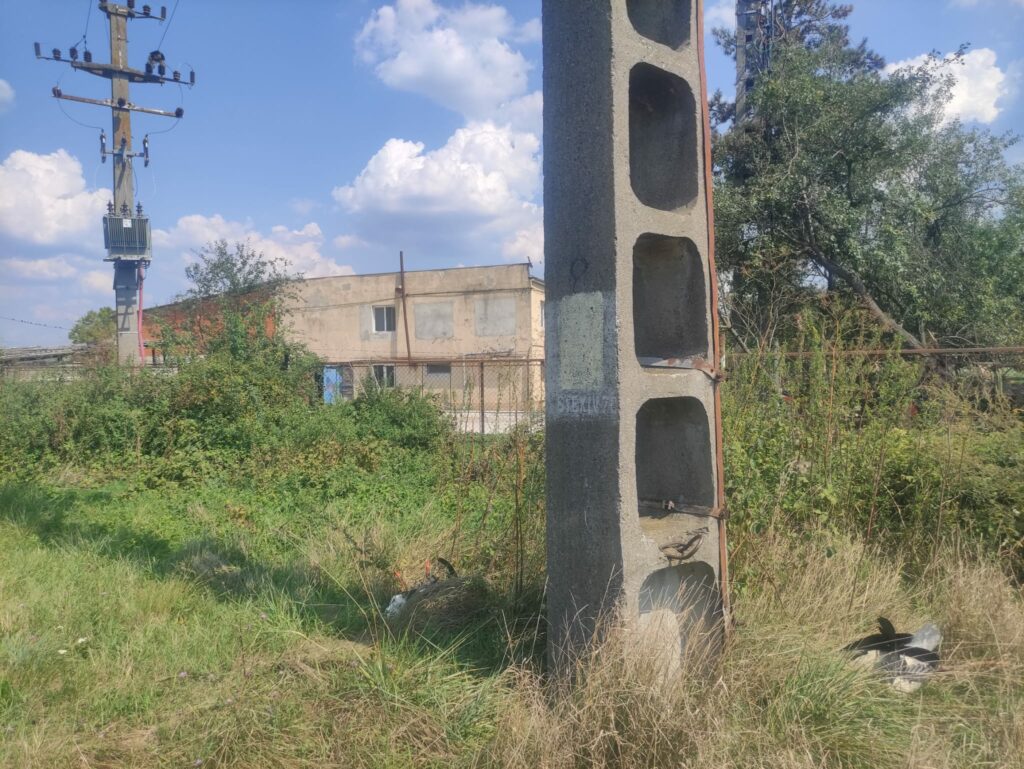
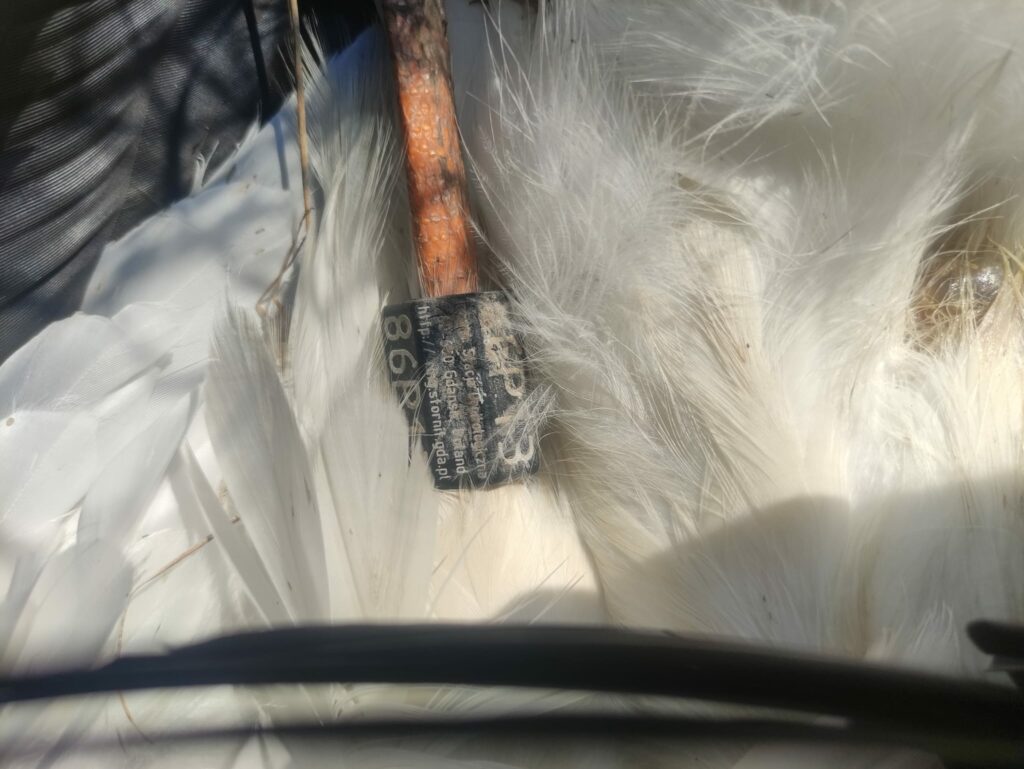
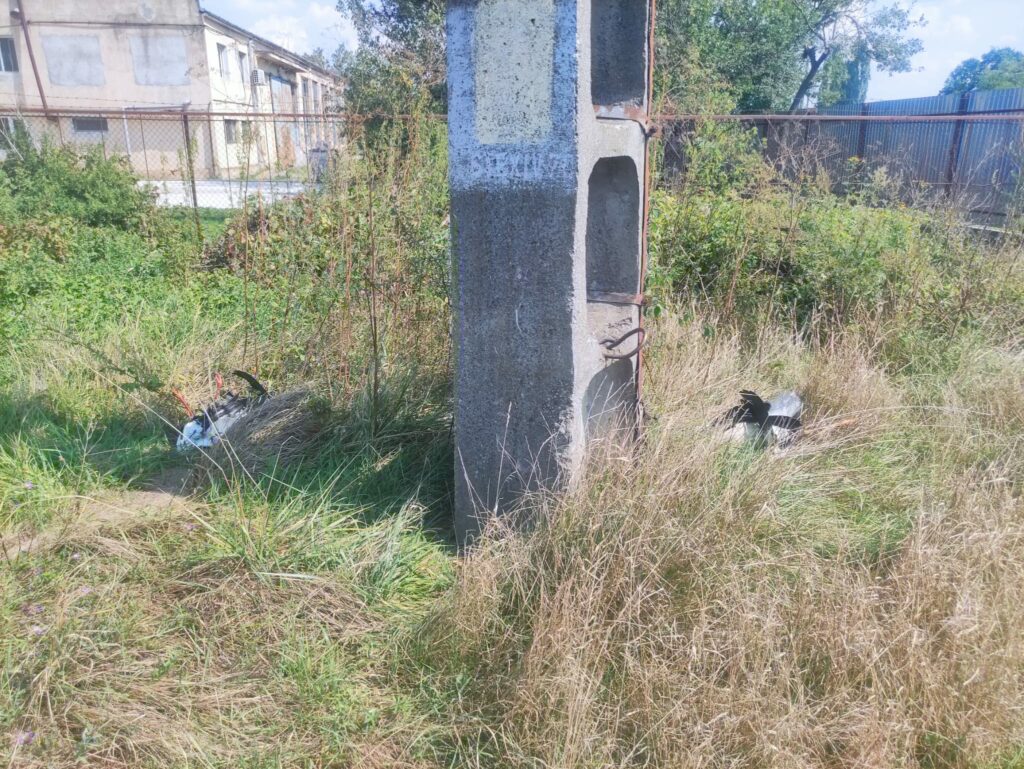
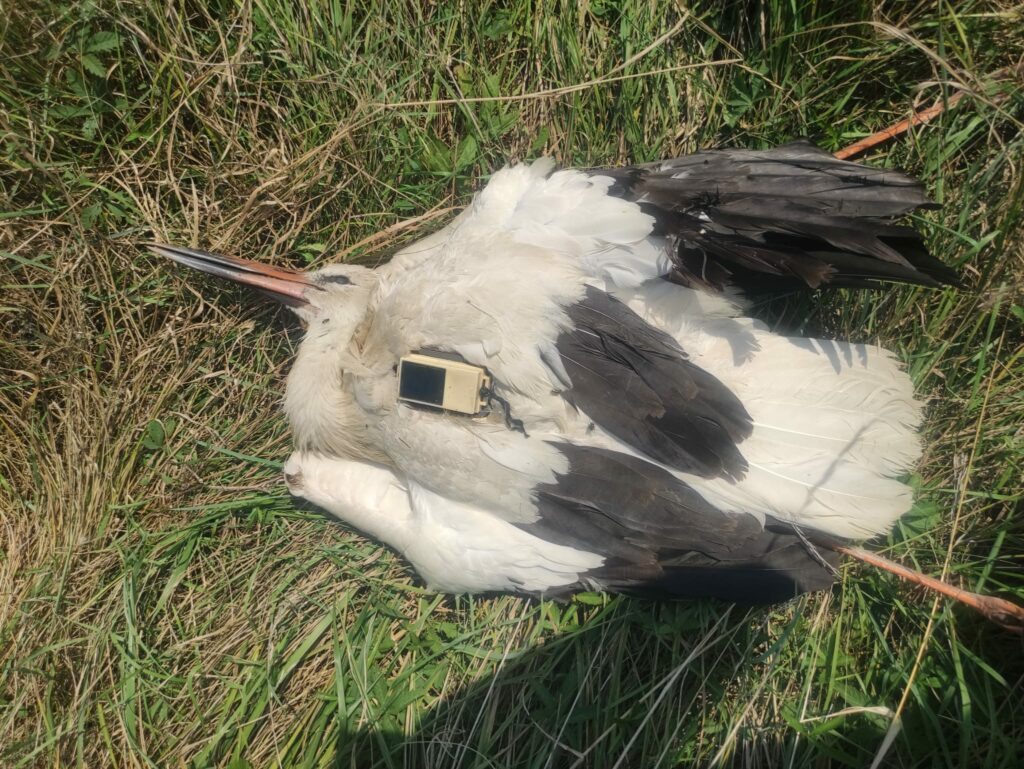
Unfortunately, negative interactions between birds and the electrical power lines are increasingly common, especially during migration. An even more serious situation occurs every year near the Oradea landfill. Being an uncovered site, it is frequented by many species of birds. In the vicinity of the landfill there are many uninsulated medium voltage poles causing carnage, especially among large birds such as the stork. On a single visit to the site by our ornithologists, 24 rooks, 10 white storks, a common magpie, a yellow-legged gull and a peregrine falcon were found breathless.

To get a clear picture of the scale of this phenomenon, all animal lovers can register such cases in the OBM database, indicating the location and the species found.
Unwanted contact between birds and medium-voltage power lines is harmful both for the animals, which lose any chance of survival once they are electrocuted, and for the electricity company, as the birds can short-circuit the network, causing significant damage to the network and jeopardising customer service.
There are solutions to avoid these tragic cases. One such solution is to insulate the electricity poles. As part of the project “Conservation of the European Roller in the Carpathian Basin (LIFE13/NAT/HU/000081)” 1,000 dangerous poles have been covered and made safe for birds.
The other option is to bury the medium-voltage power lines, which was implemented in another project in the Salonta-Békéscsaba border area, a pioneering measure for the country’s only viable population of bustards.
We need the involvement of all stakeholders if we want to protect the bird species!
